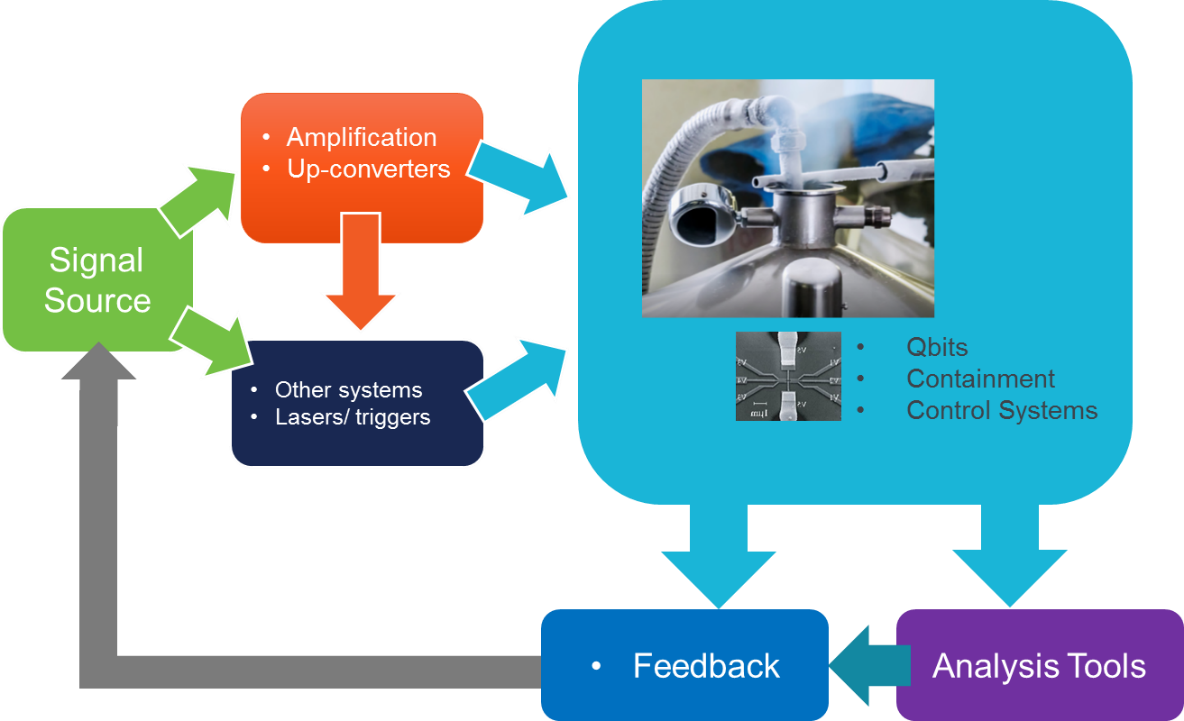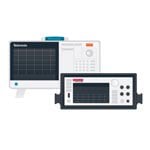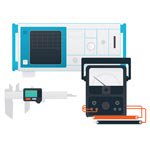
The quest to dramatically improve computer performance and capabilities centers on quantum computers – a type of computer that exploits some strange properties of physics on the smallest of scales. While much progress has been made in recent years, even moderately small quantum computers are a long way out from delivering consistent and repeatable results.
Developing viable quantum computers is the focus of numerous public and private research efforts on a global scale. And just as the research is all over the map, so too are the types of atomic and subatomic particles being used along with the techniques for manipulating them. Particles can include ions, electron/spin, photons, and nuclear/particle spin using lasers, electrical stimulation, magnetism or ion traps to control quantum bits (qubits).
One of the more difficult challenges facing quantum researchers, regardless of the technology in play, is sourcing the very precise signals needed to understand and evaluate the behavior of the qubits. The general setup, as shown below, starts with a base signal source generating IQ that is then passed along to other systems for amplification (or attenuation) and up conversion, and potentially to the trigger system of choice. Most of these experiments are done at very low temperatures, usually a few degrees kelvin or less, creating signal source challenges around pre-distortion and pre-compensation to account for various losses and cabling requirements. Adding to the complexity, these are not just one way experiments – typically you want very fast feedback returning to the signal source for real-time iteration through experiments.

It’s worth noting this type of set up and the challenges faced are not unique to quantum computing research. High energy physics, molecular and materials analysis/research and biological and chemical researchers often use similar set ups and face similar challenges around sourcing signals.
Without further ado, let’s look at what I see as the three biggest signal source challenges faced by quantum computing researchers.
Scaling challenges
A single qubit quantum computer could be interesting, but will hardly deliver world-changing breakthroughs. To be viable, quantum computers have to scale up. This is hard from a research standpoint since each qubit or experiment can require multiple independent signals, with its own up-conversion, pre-distortion and conditioning.
All this equipment can get unwieldly in a hurry, requiring lots of rack space and expensive instrumentation. Cabling alone can become a major nightmare, particularly if each cable must be precisely characterized to ensure that signals don’t distort or degrade as they go through the experiment. In fact, one of the bigger challenges is the sheer length of the cables needed as the experiment scales up. Cabling is one of those things people often don’t consider until late in their experiment, but it’s not just the signal source you use, it’s the cabling that goes with it as well.
Synchronization challenges
Signal source to signal source synchronization is critical to ensuring accurate and repeatable results. There must be low channel-to-channel jitter across synchronized channels and markers, digital channels and mixed signals must all be timed to trigger on time. Being able to start, stop and trigger with microsecond, picosecond or even femtosecond accuracy across sources is critical to ensuring that microscale devices behave accurately.
As with cabling, synchronization is one of those considerations that people tend to ignore while they are setting up an experiment. Often this requires an external clock of some sort, and the signal sources themselves must be capable of holding the synchronization over long periods of time with only a few picoseconds of skew. In some ways, a good signal source synchronization solution is more religion than science and invariably takes significant time to implement.
Up-conversion challenges
Typically, a baseband generator creates a signal that is then mixed up to an IQ modulator and then ultimately passed to an RF signal source, as shown in the graphic below. In most set ups the baseband generator is an arbitrary waveform generator (AWG), the IQ modulator is a vector signal generator (VSG) and the RF source might be a microwave signal source. This means that three different pieces of equipment are required to get your signal of choice.
So, of course, all this equipment presents challenges around cabling and scaling up the experiment, not to mention additional noise sources and considerable expense. This has led to a push across the industry to find ways to generate signals with as few signal sources as possible. With advances in direct synthesis of signals, it’s now becoming possible to generate signals with just one or two components. Depending the qubit design, integrating components is important to minimizing noise, eliminate variables and allowing experiments to scale.

Based on the challenges I’ve just described, it’s not unreasonable to suggest that quantum computing research could be accelerated with better signal source solutions. Fortunately, suppliers of signal sources – including Tektronix – are hard at work developing the next generation of signal sources and AWGs designed specifically for quantum and similar types of research. In future blog posts, I will be taking a closer look at the theory and application of the latest AWGs for quantum research applications.




